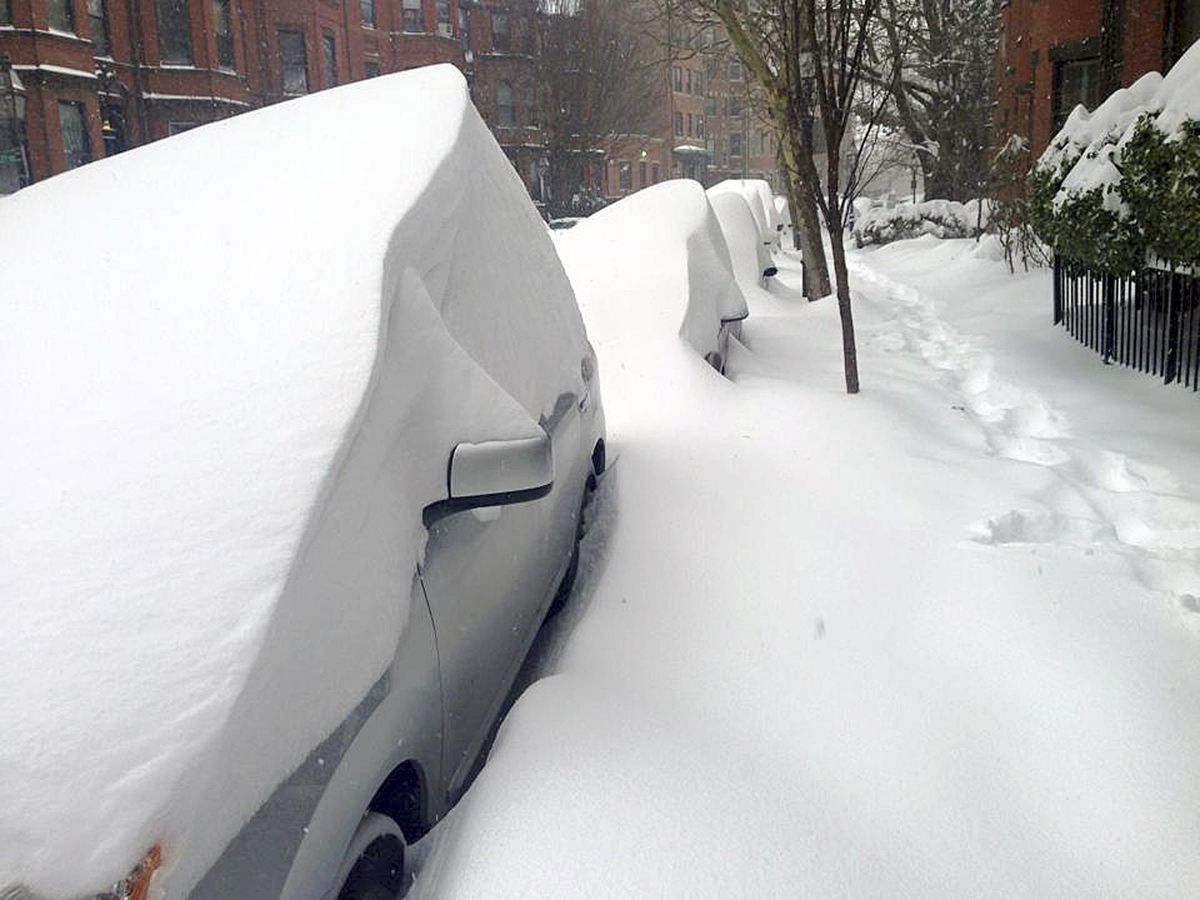
Cars are buried by drifted snow along Marlborough Street, Tuesday, Jan. 27, 2015, in Boston. A … [+]
ASSOCIATED PRESS
Measuring snow is serious business. The reputations of weather forecasters can rise and fall with the accuracy of their predictions ahead of a high-stakes snowstorm. The difference between five inches of snow and seven inches of snow doesn’t seem like much, but reliable snowfall totals can go a long way toward making future weather forecasts better. Here’s a quick guide to properly measuring snow during the next snowstorm.
The correct way to accurately measure snow is to use a snowboard, which is a flat surface (such as plywood) that measures somewhere between one- and two-square-feet in size. The purpose of a snowboard is to give you a flat and uncontaminated surface on which to take snow measurements that aren’t tainted by warm concrete, fluffy grass, or wet soil. Snowboards should be white so they minimize heat absorption, and they should have a stick or a flag attached so you don’t lose track of them. Snowboards should be cleared off at least every six hours to minimize the effects of compaction.
If you don’t have the time or space to maintain a dedicated snowboard, it’s still easy to take snowfall measurements that are pretty close to accurate.
Try to measure the snow on a hard surface that doesn’t induce too much melting. The best surface for measuring snow on the fly is a deck or another elevated wooden surface. Decks don’t get too warm and they tend to hold accumulating snow well. The roof of a car can work in a pinch, but be mindful that snow tends to compress and melt when it lands on the warm exterior of vehicles, especially near the beginning of a storm.
Whatever you do, avoid the grass. It’s instinctive to want to jam the ruler down in the first patch of lawn out the door. Grass is terribly unrepresentative of snowpack. Sticking a ruler into snow on the lawn can artificially inflate the accumulation by a couple of inches. Some blades of grass are thinner and weaker than others, so certain types of grass will cause the snow to pile up on top of the lawn itself instead of accumulating on the ground between the individual blades.
Don’t measure on an angle. Sticking a ruler into the snow at an angle will make it look like more snow fell than what actually did. It’s great if you’re looking to one-up the guy down the street, but reporting an inflated measurement can make it hard on meteorologists trying to verify their forecasts and properly document a winter storm for the record books. Forecasters use those verifications to improve forecasts for later storms. Hold the ruler level and steady so it gives you an accurate read of the snow at that particular point.
It’s important to take multiple measurements. Snow doesn’t fall in a uniform blanket. Some areas wind up with deeper snow than others, especially when the wind starts blowing. Measuring a snow drift is only representative of how effectively the wind blew snow into a certain spot. Snow drifts can make it difficult to take accurate measurements even under the best circumstances. The safest way to account for potential drifting issues is to take multiple measurements. Averaging together five or six different measurements is the best way to get a true idea of how much snow fell at your location.
This article is auto-generated by Algorithm Source: www.forbes.com


